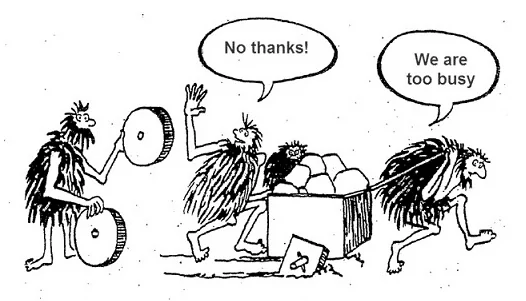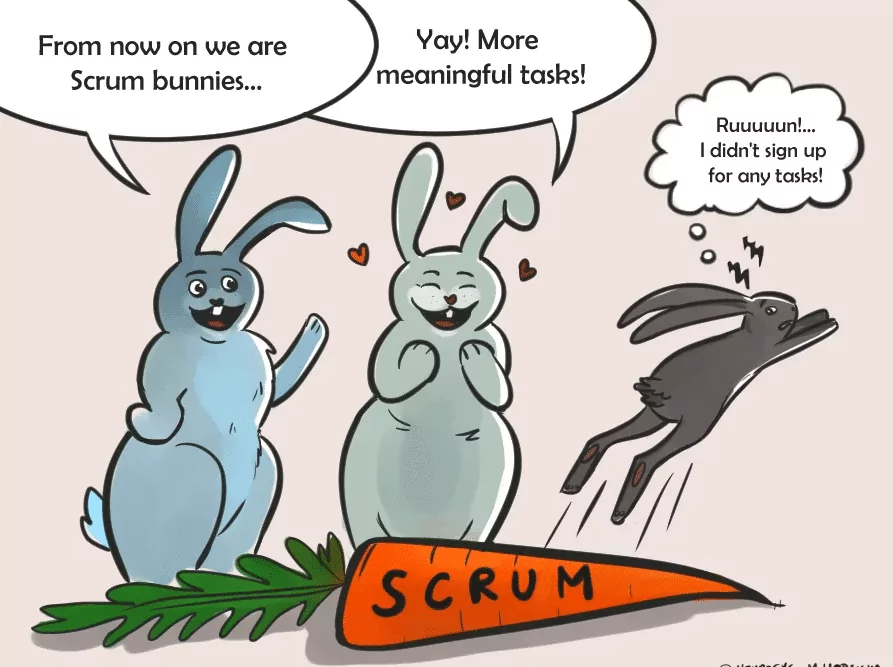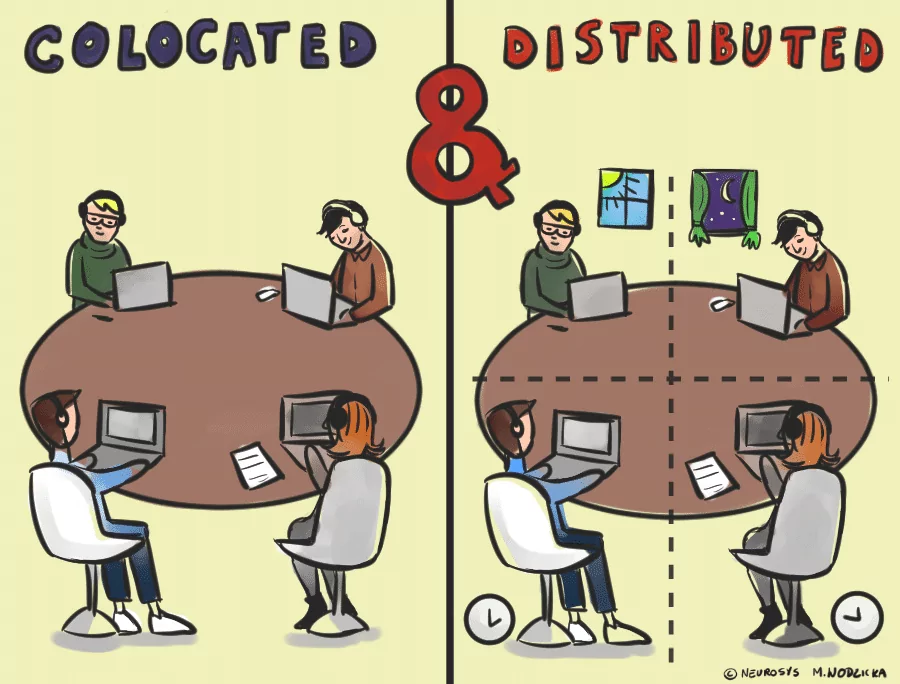The transition to Scrum is an exciting learning experience for everyone involved and is usually embraced with lots of enthusiasm. However, at some point, the storming stage (according to the Tuckman’s stages of group development) begins and the whole project might get overshadowed with human skepticism and doubts.

Whereas some managers think it’s just a noise that should be ignored and waited out, we recommend dealing with arising issues early on. The sooner you educate team members and persuade skeptics, the faster the team gets to normal and becomes productive.
Here are some typical challenges you might want to be prepared for:
#1 – Resistance
It’s in human nature to be scared of changes and try to push them back. So don’t be surprised when people in the team (especially those who were in charge of the project before) won’t support the initiative and try to slow down the process. For them, it might look like somebody is taking digs at them. Your role here is to convince them otherwise.
Resistance can be fueled by people’s fear of losing their jobs due to the optimization. If so – try to explain that the idea of Scrum isn’t to fire people with superfluous roles. Superfluous roles/functions (if any) will be removed, but more focused and meaningful ones will be created. Employees only win from this.
It also happens that people are not ready for the new dynamics that Scrum introduces, which requires honest estimation and commitment to delivering within estimated timeframes. Usual excuses like “we deliver when we deliver” are unacceptable. People who are not used to commit and perform, will try to change or might eventually choose to leave. And there is nothing you can do about it actually, nor you should – the process cleans itself.

#2 – “Scrum doesn’t work for distributed teams”
There is a widely spread misperception that Scrum doesn’t work for distributed teams. Indeed, personal interaction is important in Scrum, but thanks to all the telecommunication tools available nowadays, the distance is not a hazard anymore.

#3 – “Scrum is chaotic and doesn’t allow to predict the results in a long-term”
Another myth you might need to dispel to calm down the panicking crew. Scrum is agile in a sense that it maximizes responsiveness to changing client’s needs. This is possible due to the high level of team organization and has nothing to do with the process being chaotic.
In fact, Scrum was invented as the answer to never-ending money-sucking Waterfall projects. It helps identify impediments due to which delays or problems with quality happen. After first few iterations the team is able to measure its capacity and progress, and therefore predict realistically (and not just assume) when the project will be delivered. If you hear “we deliver when we deliver” instead – well, your team adopted a magic crystal ball, not Scrum.

#4 – “There are too many meetings in Scrum, they disturb us from the main task”
Scrum-sceptics cling to any straw to prove they’re right and say they cannot work productively with so many meetings they have in Scrum.
This might be a real problem if team members work on multiple projects (which is against Scrum logics, see tip No 5 from the first part of this article).
Within a single project, the Scrum meetings are called to ensure the necessary communication flow. If the team doesn’t see the value of some Scrum meeting, it might mean a) it is handled poorly and something must be fixed; or b) it is indeed redundant and the team is free to cut it off or have it less often.

… We hope you find this reading useful. Last but not least – be patient but persistent to overcome all the challenges and resistance that might appear on your way. And most importantly – enjoy your journey 🙂




